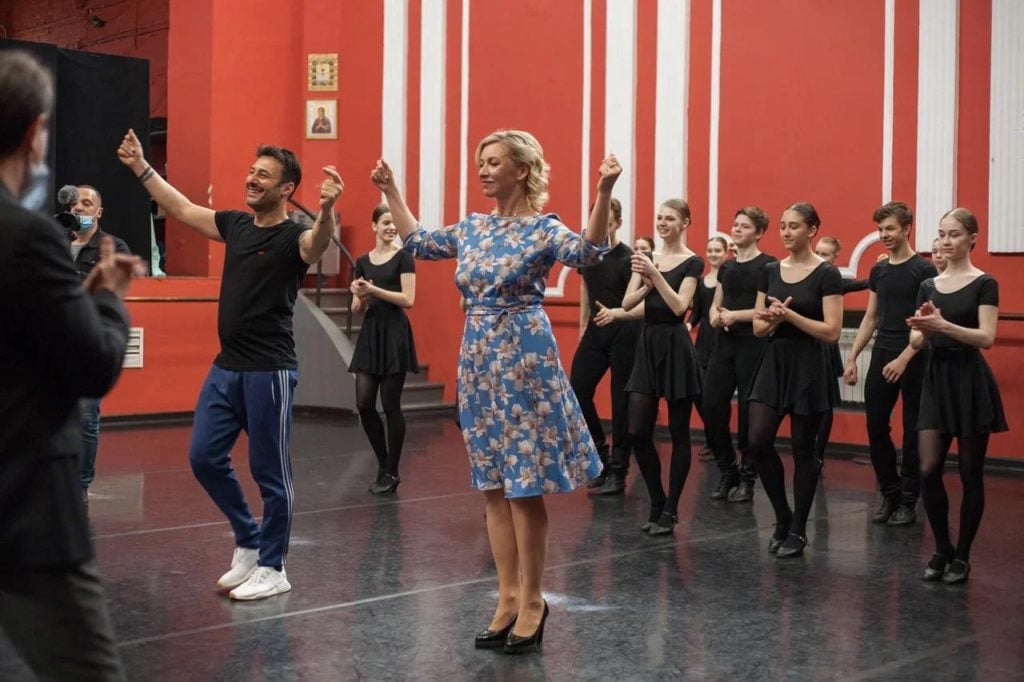
The Russian National Ballet at Kostroma performed the iconic Greek dance Zeibekiko in front of an official representative of the Foreign Ministry of Russia, Maria Zakharova — and she even joined in the historic dance herself, learning the moves from the choreographer.
The official was an honoured guest of the performance, which occurred in celebration of the 30th anniversary of the National Ballet Kostroma on April 25.
Zeibekiko in Russia?
The National Ballet Kostroma performed the zeibekiko as part of their “Global Dance Overture,” an ambitious worldwide project by the ballet. Their goal is to perform dances from across the planet in order to celebrate the multiplicity of races and cultures found all around the world.
According to Christos Shakallis, the Greek choreographer of the project, it “aims to unite all the peoples of the planet.”
The ballet in Kostroma, Russia has worked on many Greek dances under Shakallis’ direction, including the hasapiko, hasaposerviko, zorba, and of course the zeibekiko. The zeibekiko has the honor of not only being included in the ballet’s “Global Dance Overture,” but will also be included in their new ballet program “Street of Peace.”
A video of the performance can be found below:
Anniversary celebration
The performance of the zeibekiko at the 30th anniversary of the National Ballet Kostroma was attended by Zakharova, the Director of the Information and Press Department of the Russian Foreign Ministry. She also acts as an official representative of the Foreign Ministry of Russia.
The music at the performance was by Manos Loizos, and the zeibekiko choreography was by Shakallis himself.
A video of Zakharova being honored at the anniversary showcase can be found below:
Greek dances for every occasion
Dancing, (or “horos”), has held a very important place in Greek culture for thousands of years.
Over time it has evolved to suit the needs of different groups of Greeks, who have made their own dances, leading to great regional diversity in this most physically expressive of the arts.
Dances are extremely important to Greek communities, and perform a social function as well: you will often see Greeks spontaneously (or not!) burst into dance at weddings, Greek Easter, or school functions.
The Zeibekiko as performed in Russia
One of the most unique and visually striking Greek dances is the zeibekiko. Zeibekiko originated in Asia Minor, and the legacy of tragic displacement and of a homeland lost certainly lives on through this dance.
It is difficult to dance the zeibekiko, mainly because it has no set steps, no particular rhythm. It requires an inner intensity, because it is an improvised movement that expresses the feelings of the individual who gets up to dance.
This meaningful dance often conveys feelings of defeat, of sadness, life’s despair and unfulfilled dreams, the bad luck you see coming, and the dark at the end of the tunnel.
Zeibekiko is performed solo and was traditionally exclusively to be danced by males, but women have begun to take part in this expressive movement as well, breaking gender roles.
In Russia, the zeibekiko was performed choreographed, and remained true to tradition by including only male ballet dancers in the performance.
See all the latest news from Greece and the world at Greekreporter.com. Contact our newsroom to report an update or send your story, photos and videos. Follow GR on Google News and subscribe here to our daily email!



